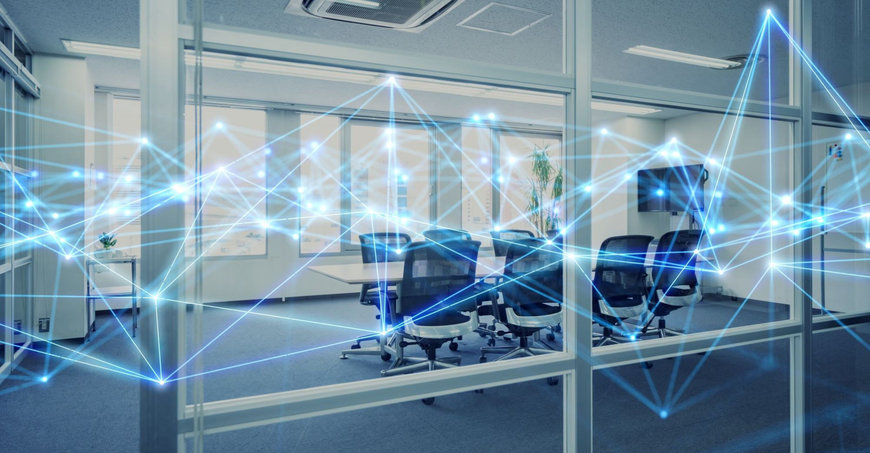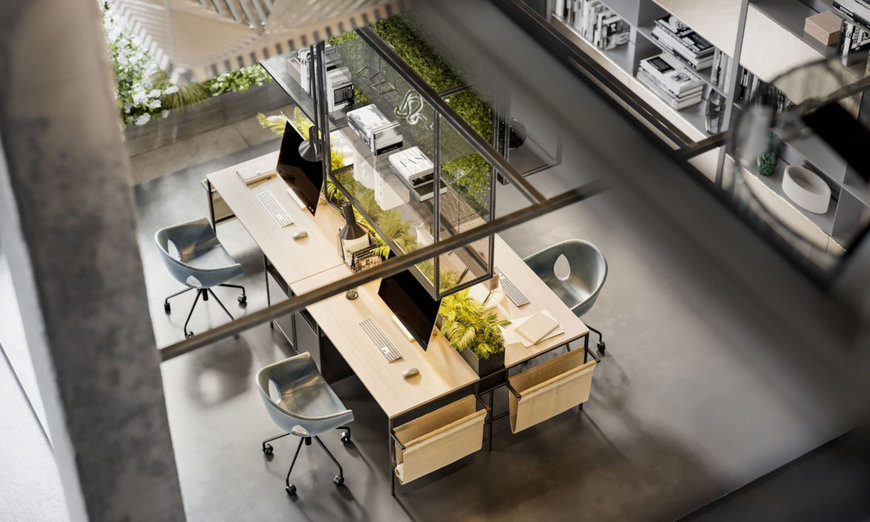smartbuildingmag.com
25
'22
Written on Modified on
Enocean News
The smart approach to cutting emissions in the built environment
A perfect storm of environmental and economic issues is turning intelligent, networked workspaces into a new business imperative. EnOcean’s CEO Raoul Wijgergangs examines what’s involved.

As global warming accelerates, governments and enterprises are seeking ways to reduce harmful emissions as quickly as possible to avert the possibility of the climate falling into an irrecoverable feedback loop of rapidly escalating disasters. Given the built environment is currently responsible for around 40% of carbon emissions globally, it is not an exaggeration to say that some substantial and rapid changes here could help prevent serious environmental harm.
At the same time, the increase in homeworking and financial pressures catalysed by Covid 19, combined with spiraling energy prices, are also driving many organisations to reevaluate how they use their buildings. Expensive, half-empty workspaces represent a cost that few businesses can now afford or justify.
Slashing costs and emissions
Retrofitting intelligent IoT systems for demand-driven space and energy use is one quick and easy way to make substantial impacts, both economically and environmentally. In automated and smart buildings, networked sensors are used to collect real-time data about variables such as light, temperature, occupancy and CO2 levels.
This is then transformed via cloud-based analytics into insights that can be applied to make physical workspaces much more efficient, as well as healthier and more comfortable for workers. Heating, lighting and ventilation can be automatically adjusted according to environmental conditions and turned off when rooms are empty, while issues such as inefficient use of space can be identified and addressed.
By optimising resources in this way, companies can immediately reduce the energy consumption and CO2 emissions of their buildings by around 30%. With energy costs tripling for many businesses in the past year alone, that’s a highly compelling proposition, offering a return on investment of just a few weeks. It’s also very good news for the environment.
The savings can be increased yet further by using self-powered, wireless switches and sensors from EnOcean. Because there is no wiring involved, they are fast and easy to install with minimal disruption in the process; it’s just a question of sticking them to walls or furniture. This means the cost of retrofitting is about 70% lower than wired solutions, or 30% lower for new builds.
They are also far more sustainable because they don’t require large quantities of copper and PVC for cables. As they are self-powered, there is no need to use batteries, and therefore no toxic waste. Once fitted, they can be forgotten about, requiring almost no maintenance. They are also exceptionally easy to integrate to existing IT infrastructure, without the need for a dedicated IoT data network.

Harvesting ambient energy
Unlike batteries, which require 500 times more energy to produce than they later supply, and contain many harmful substances such as cadmium, lead and mercury, the energy source for EnOcean’s self-powered wireless sensors, is 100% clean, renewable and free. They ‘harvest’ energy from light, movement, or temperature differences in their immediate surroundings and use it to power their operation and radio communication via the open standards EnOcean (ISO/IEC 14543-3-1X), Bluetooth or Zigbee.
Interior light can be used for electrical voltage from as little as 50 lux via small solar cells. The combination of a thermal converter and a voltage amplifier can convert temperature differences of as little as two degrees Celsius into usable electricity. This means EnOcean sensors and switches work anywhere, in all types of buildings.
For these reasons, EnOcean is the world’s most widely used solution for networking smart buildings. It boasts an ecosystem of more than 5,000 interoperable products based around the international EnOcean radio standard. To date, more than 1,000,000 buildings globally have been installed with smart systems from EnOcean using self-powered, wireless sensors.
When you consider that every 100,000m2 of real estate fitted with EnOcean systems saves approximately 206,000 kHw of energy per year, as well as 300km of cabling including 42 tons of copper with a carbon footprint of 170 tonnes, that adds up to a substantial reduction in carbon emissions.
Optimising space and boosting productivity
Yet, reducing costs and emissions are not the only benefits of digitalisation. Smart buildings are also better places to work. Small adjustments to environmental conditions such as temperature, airflow and lighting can make a big difference to employee satisfaction, health and effectiveness.
For example, if ten adults spend an hour in a poorly ventilated room, not only will they feel uncomfortable, but they will find it as difficult to concentrate as if they had drunk two glasses of wine. However, intelligently controlled ventilation can be used to prevent CO2 building up in crowded spaces. It can greatly reduce exposure to airborne contaminants such as viruses, too.
Data collected from sensors can also be analysed to identify any areas of a building that are being used inefficiently, determining the best use of space. This enables companies to reduce their physical footprint, cutting waste and saving on the costs of, energy, furniture and rent. Similarly, smart technology can facilitate hotdesking.
Vibration sensors reliably monitor which workstations are free, sharing this information with employees via an app. People can then pick a desk that exactly fits their requirements on any given day, for example in a quiet area or close to team colleagues or technical equipment. This helps to create a more productive, flexible and dynamic working environment that is adaptable to changing needs, while making best use of the space available.
Who would think that so much could be achieved by simply sticking devices no bigger than a light switch around a building? It’s not hard to see why smart building technology is surging in popularity as pressures on businesses intensify. It offers the perfect mix of sustainability, cost savings and tangible business benefits – all with an exceptionally rapid ROI. As a result, we anticipate smart buildings will become the norm in commercial and industrial premises within the next five years.
www.enocean.com

